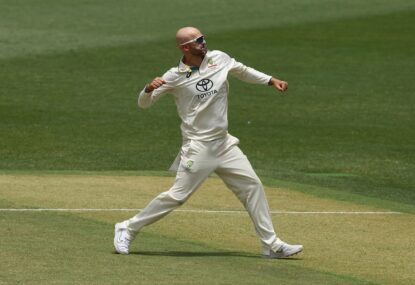It’s been six months since that infamous day in Cape Town – a day on which one of Australia’s own, Cameron Bancroft, was caught live on television in a blatant act of cricketing skulduggery.
Although ball tampering has a long history in the game, the calculated and ill-disguised nature of the incident shocked Australian cricket fans, who have constantly been fed the line that the national side plays ‘hard but fair’.
At a local level, cricket clubs across the country have recently resumed hostilities. With the Aussie side’s reputation severely undermined on the international stage, selector Trevor Hohns has been quick to look forward to an “exciting new era” with a new-look side, a new TV rights deal and a new coach.
The much-vaunted cultural review is scheduled to be released today and should provide some insight into whether any change will occur because of this sorry episode.
In Brisbane’s western suburbs, Greg Noonan, club president of Kenmore, is getting on with the business of running a cricket club. Recalling his response to the incident, he describes the annoyance he felt:
“In terms of [my] reaction, probably anger and frustration that guys at that level would think it acceptable to partake in that sort of behaviour and secondly, the fact that they actually would think that they could get away with it.”
This is the question many are asking: How did it get to this point and who was responsible?
At the current time, opener David Warner appears to be the major public scapegoat. Others, however, blame coach Darren Lehmann for allowing Warner too much influence over the national side following the high-profile retirements of veterans Michael Clarke, Brad Haddin, Chris Rogers, Mitchell Johnson and Ryan Harris.

(Ashley Vlotman/Gallo Images/Getty Images)
Noonan shares this sentiment: “I think that one of the things that have come out of the post-mortems is that a truly world-class player like Warner has probably been allowed to do whatever he wants in that team environment without facing the repercussions that a player of lesser skill may, and he hasn’t been reined in.”
But with this sort of behaviour on display at the top level, were there any fears of copycat behaviour filtering down?
When put to the various cricket associations, this question provoked some interesting responses. While the larger state bodies were adamant that this incident wouldn’t change anything at a grade level, smaller competitions were much more willing to talk about the fact that conversations had occurred with their umpires before the start of the season.
Representatives from the bigger states were reluctant to acknowledge any change in practice. Malcolm Conn of Cricket NSW stated the organisation didn’t receive any reports of ball tampering at a grassroots level and that, “Like any season, if any issues arise, they will be dealt with in the usual way under the laws of the game and relevant playing conditions.”
The response from Cricket Tasmania representative Chris Garrett was virtually the same, specifying that: “Standards are reflective to those at higher levels of the sport.”`
A Cricket Victoria spokesperson offered a more positive statement, but it still failed to mention any change in practice:
“We want our teams to be successful but not at the expense of the laws … or the spirit of the game. At a local Victorian level we can be proud of the fact that the clear majority of junior cricket and club cricket across our state is played in the best spirit of the game and respecting the laws of the game.”
ACT Premier Cricket Competitions manager Ben Ryan, however, acknowledged that some conversations had taken place following the scandal.
“The implications of the incident have been discussed at Cricket ACT in conjunction with the overall spirit of the game we are custodians of. Ahead of the season opener of our Premier Cricket competition, we will be facilitating a captains and umpires briefing. Ball tampering will be on the agenda.
“Our umpires have been instructed to be extra vigilant in their inspections of the ball during games. At a junior cricket level, club volunteers who umpire games have also been alerted.”
Noonan says that delegates at the QSDCA umpires and captains preseason meeting all dismissed the idea, stating the two-piece ball used in junior and sub-districts cricket would de-incentivise the need to ball-tamper.
“It’s not really that difficult in a humid Brisbane summer to get that thing to move 80 to 90 centimetres.”
Despite this, he sees this incident as an opportunity to re-emphasise the club’s commitment to the spirit of cricket to the children who play at Kemore, and for overall broader reflection on the culture of Australian cricket.
“I think one positive thing that has come out of this whole fiasco is that I believe it has forced many amateur cricketers to reassess the spirit with which they play the game.”
Among all the furore, Cricket Australia will be hoping that Tim Paine’s new-look Australian side can somehow pull off a surprise series win against India in the coming home summer to lessen the impact and negative publicity of the review’s upcoming public release.






































































































